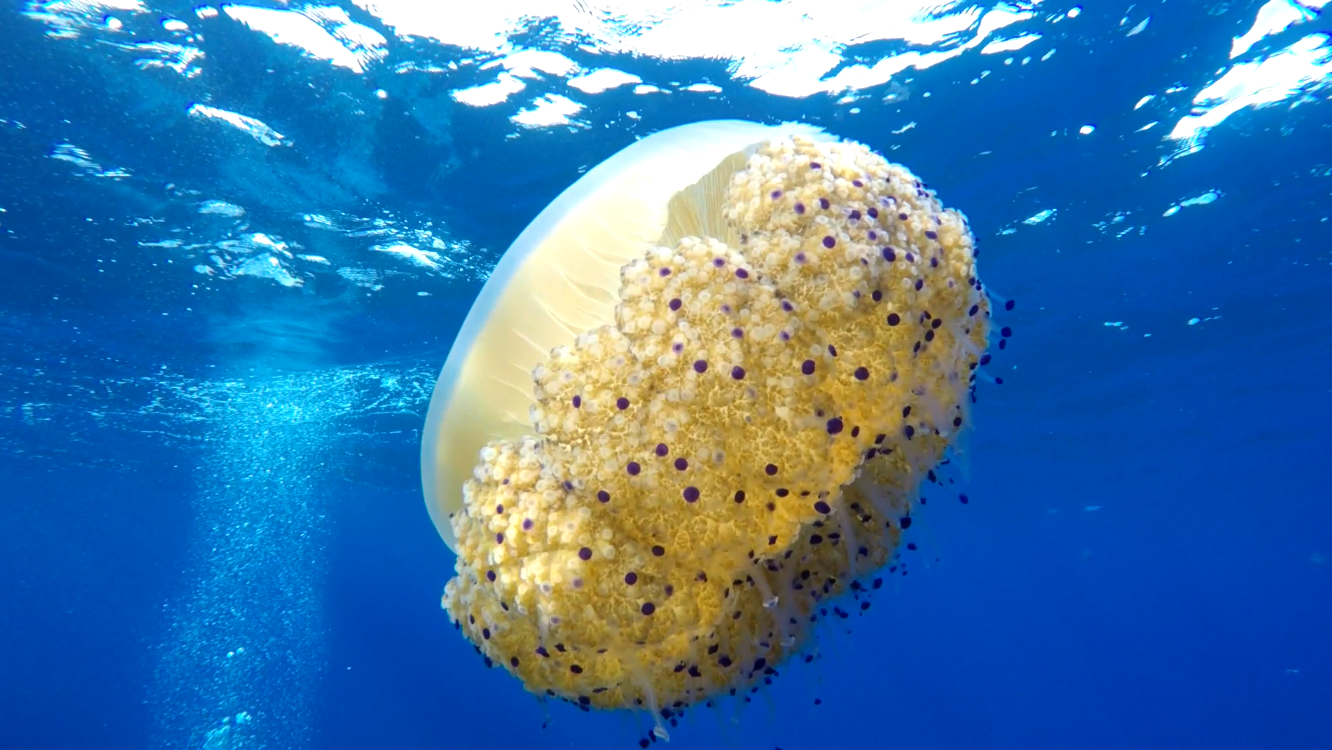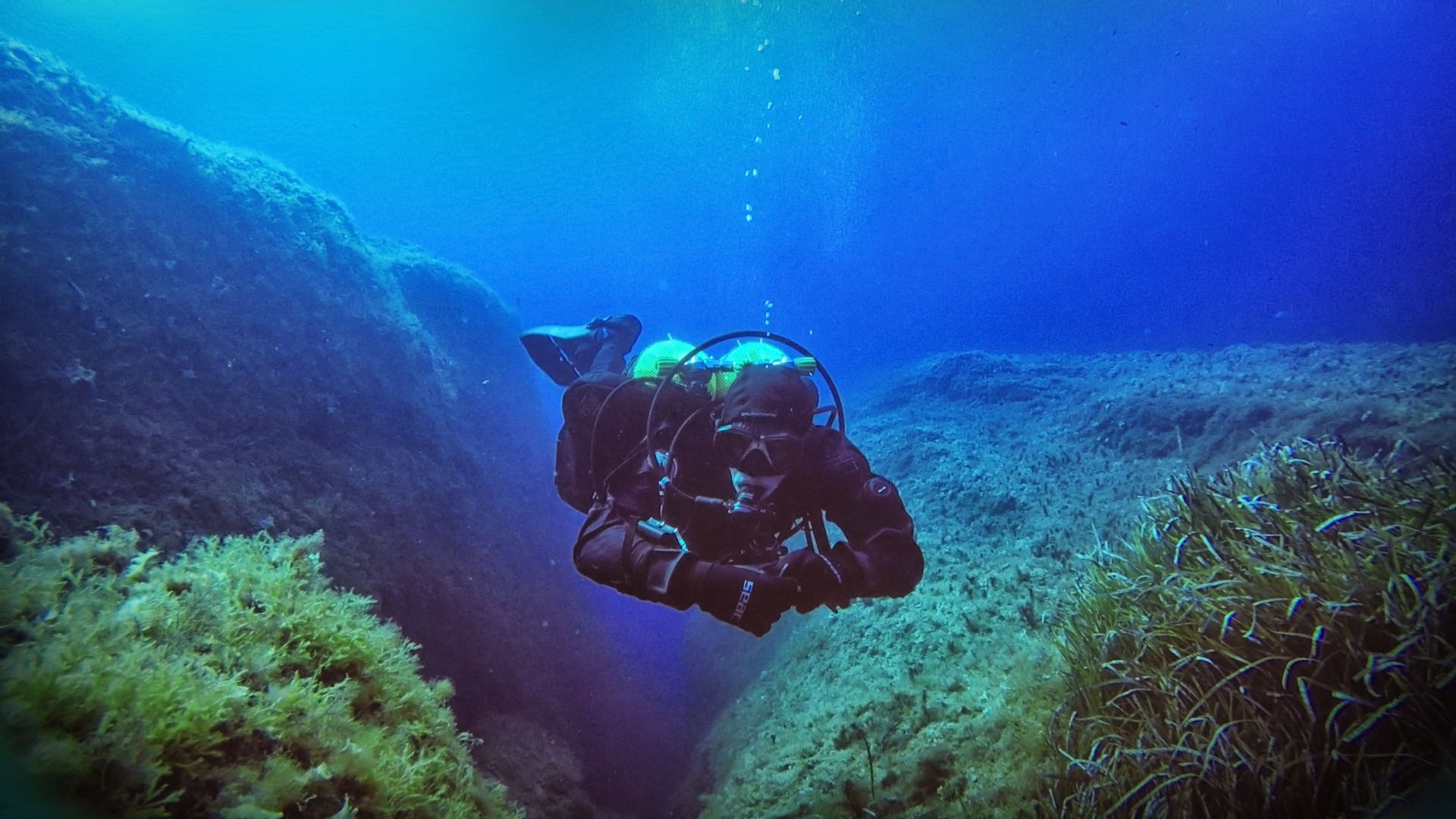Yesterday afternoon I returned to the water with Brian Azzopardi from Atlantis Diving Centre to try out my new technical diving rig. A couple of Scubapro Mk25 EVO/A700 Black Tech regulators, a Tecline Donut 22 SE wing, a Bare X-Mission drysuit and OMS slipstreams (yes, my poor pockets indeed) were all set to get their first immersion yesterday. And what better place to try and sort out any kinks with new equipment than Xwejni Bay in Marsalforn, Gozo?
However, as exciting as new kit is, I’m not going to be talking about equipment in this post. (Perhaps I will return to that in a later post after I’ve done a couple more dives with this setup.) Today, I mainly wanted to share a short video clip of Fried Egg Jellyfish, or, to call them by their scientific name: Cotylorhiza tuberculata.

I took my camera along for the dive – actually not because I intended to use it myself, but rather so that Brian would film me underwater; that way I’d be able to inspect my trim (i.e. optimum level position underwater) with the new kit and identify any issues that should be corrected. As luck would have it, on the way back to shore we encountered a lovely group of these jellyfish swimming gracefully above our heads close to the surface. Brian promptly indicated that he wanted to have a closer look and get them on camera – they certainly make for a more interesting subject than me finning along the shallow bottom! Have a look at the clip below – and then scroll down below the video to learn more about this fascinating jellyfish species.
Fried Egg Jellyfish bloom as Maltese summer comes to a close, around September to October. Since this coincides with the Lampuki (Dorado / Common dolphinfish) fishing season, this jellyfish is sometimes referred to locally as Tal-Lampuki (i.e. of the Lampuki).
Cotylorhiza tuberculata can grow up to 35cm (occasionally even to 50cm!) in diameter. It dwells close to the surface, feeding on zooplankton. It is able to move of its own accord without depending on currents, and oftentimes one can see small schools of young fish hanging out with this jelly.
Whilst Cotylorhiza tuberculata does have the ability to sting, it seems that its sting is mostly innocuous to humans. A species of single-celled algae called zooxanthellae lives in symbiosis with this jellyfish, giving its purple/purple-tipped appendages their colour. The fried egg jelly has a fairly short lifetime of just half a year.
I should say that earlier on during this dive we also met a nice shoal of cornetfish – also fascinating creatures – but throw me a colourful jelly, and you can rest assured that it will be the focus of my blog post!
The one negative I will mention here: it would be great if people stopped thrashing their plastic in the sea! We came across quite a few scattered bits of plastic bags. Folks, take care of the sea for it sure has been taking care of us for a long time – and if we do our part to conserve it, it will continue do the same for us.
Right, so I’ll wrap this one up here. Happy & safe diving, folks!


Site: Xwejni Bay, Gozo
Time in: 14:44
Time out: 16:21
Runtime: 97mins (1hr, 37mins)
Max Depth: 18m
Bottom Temperature: 24ºC
Visibility: Good